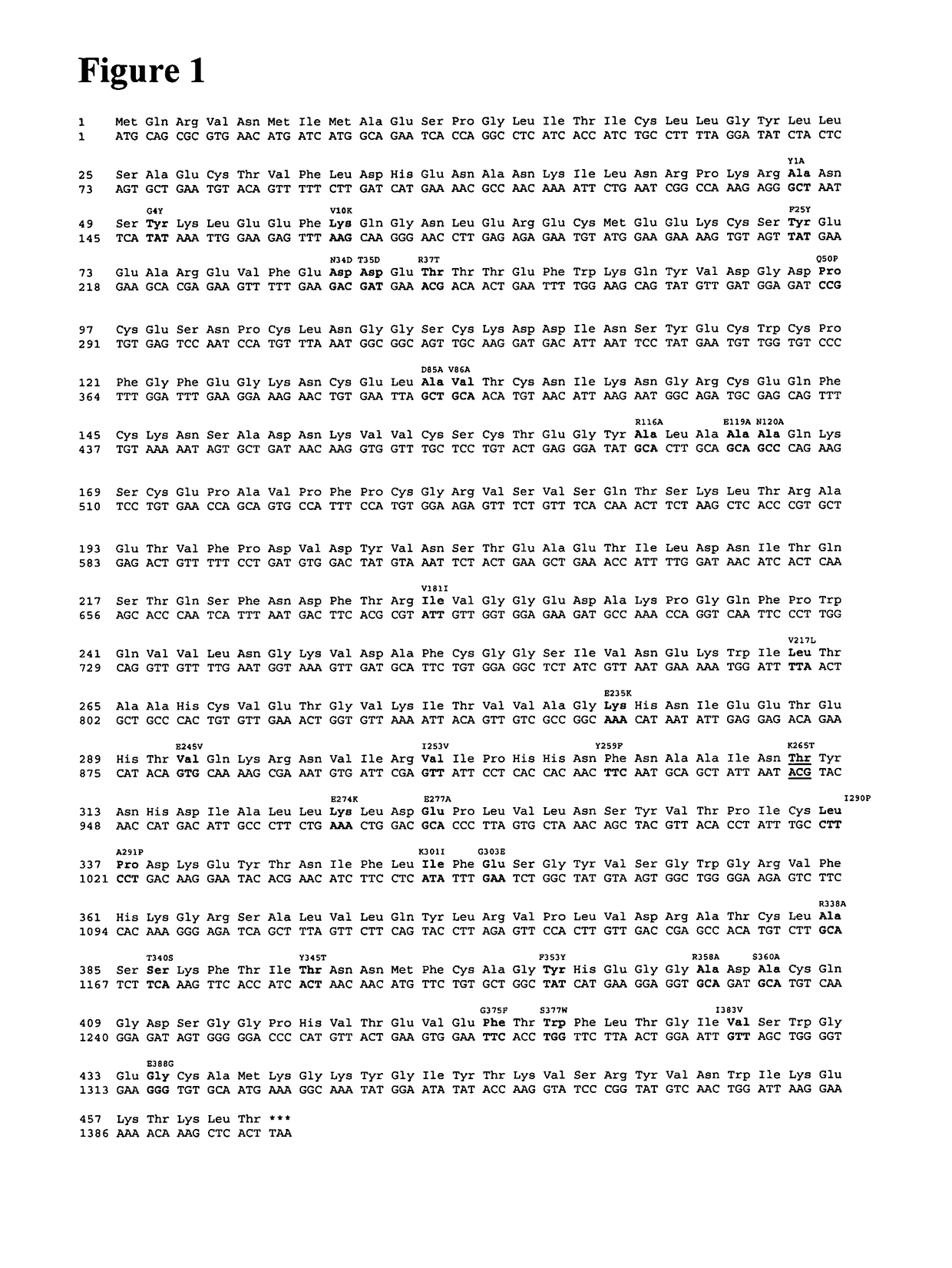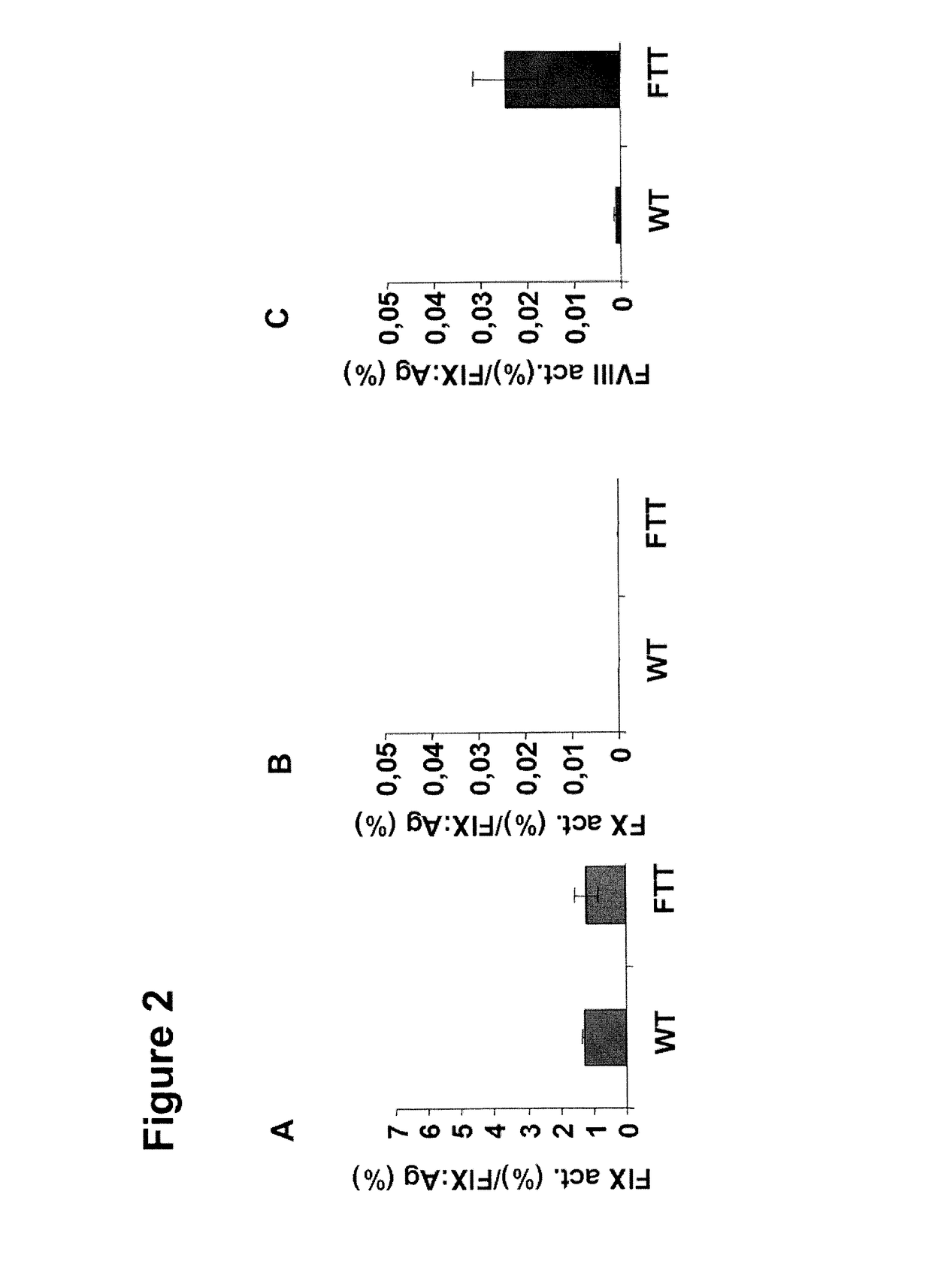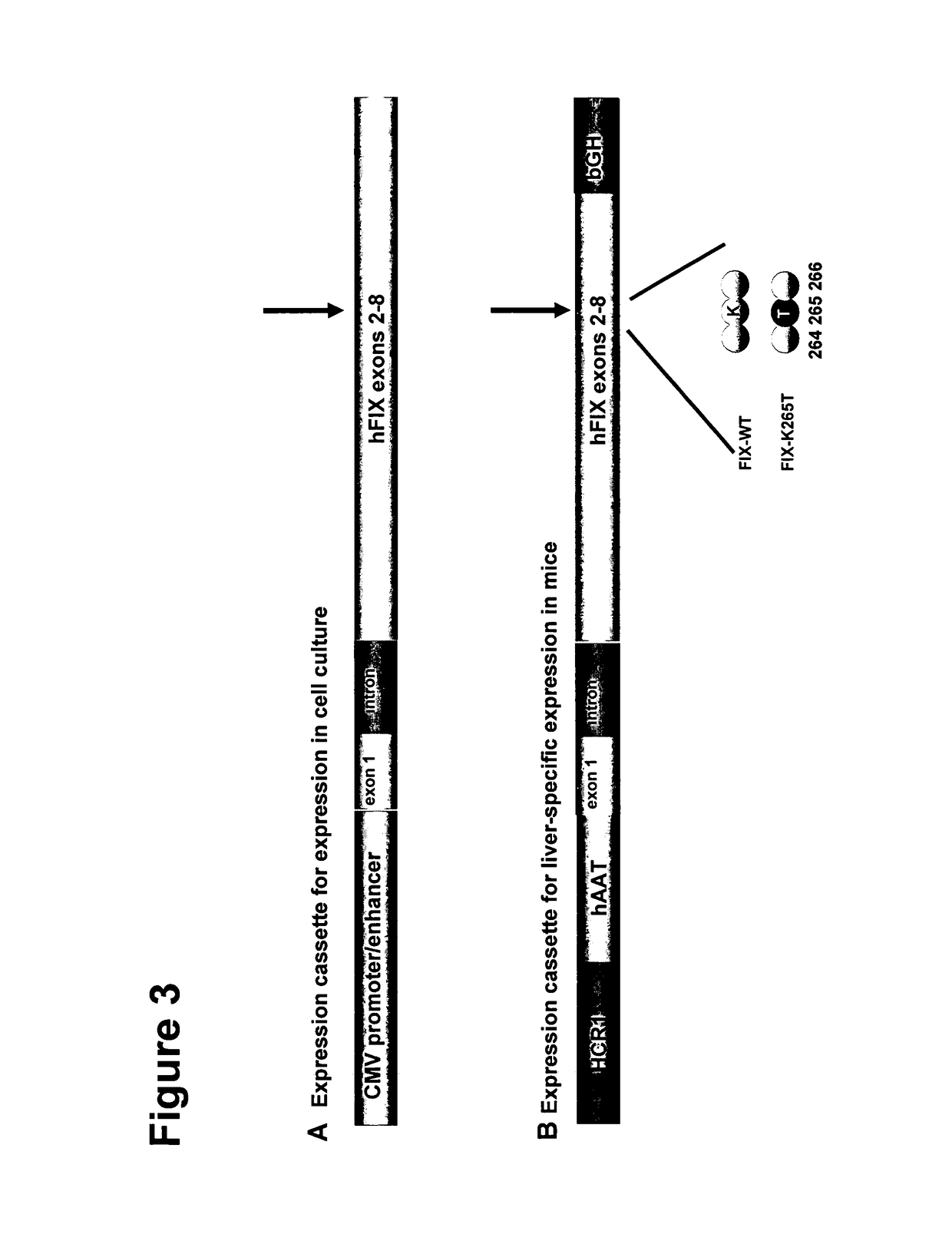Factor IX variants with clotting activity in absence of their cofactor and their use for treating bleeding disorders
a technology of clotting activity and cofactor, which is applied in the field of factor ix variants with clotting activity in absence of their cofactor and their use for treating bleeding disorders, can solve the problems of impaired binding in s1, overall decreased activity, and reduced blood plasma clotting factor levels of coagulation factors needed for a normal clotting process
- Summary
- Abstract
- Description
- Claims
- Application Information
AI Technical Summary
Benefits of technology
Problems solved by technology
Method used
Image
Examples
example 1
[0292]The inventors explored the hypothesis, that modification of the active site conformation of F.IX towards a state more likely observed when assembled in the tenase complex would result in a protein with increased activity in absence of F.VIII.
[0293]The mutations were chosen based on the structural studies comparing and substituting residues of F.IX by F.X available in the literature (Hopfner et al., 1997; Sichler et al., 2003).
[0294]The inventors first introduced the mutations Y259F / K265T / Y345T (FTT) into F.IX and expressed the protein in tissue culture. Basically no effect was seen on F.IX specific activity; however the activity in F.VIII-deficient plasma increased dramatically. Since this activity is still a small fraction of the F.IX specific activity (100% of F.IX antigen corresponds to 2% of “F.VIII-like” activity), the inventors concentrated the variant proteins to concentrations of 20,000 to 40,000 ng / ml (400-800% of normal plasma concentration). In this concentration “F...
example 2
[0296]To further improve the properties of the FTT variant, the inventors combined the FTT variant with several other mutations in order to generate F.IX molecules with different properties.
[0297]Table 1 gives an overview of the tested mutations and the activity of the variants in F-VIII.- or F-IX-deficient plasma.
example 3
[0298]Since (13) described an increased effect of the truncated F.IX (rf9) on chromogenic substrates only when all three substitutions (Y94F, K98T, and Y177T chymotryspin numbering) of the FTT variant were present at the same time, the inventors initially used the combined variant for the experiments.
[0299]However, the inventors also tested the single mutations and found surprisingly that the only substitution necessary is the K265T (i.e. K98T) variant and that the others are even worsening the protease activity in presence and absence of F.VIII (Table 1).
PUM
| Property | Measurement | Unit |
|---|---|---|
| half life | aaaaa | aaaaa |
| half life | aaaaa | aaaaa |
| half life | aaaaa | aaaaa |
Abstract
Description
Claims
Application Information
 Login to View More
Login to View More - R&D
- Intellectual Property
- Life Sciences
- Materials
- Tech Scout
- Unparalleled Data Quality
- Higher Quality Content
- 60% Fewer Hallucinations
Browse by: Latest US Patents, China's latest patents, Technical Efficacy Thesaurus, Application Domain, Technology Topic, Popular Technical Reports.
© 2025 PatSnap. All rights reserved.Legal|Privacy policy|Modern Slavery Act Transparency Statement|Sitemap|About US| Contact US: help@patsnap.com



